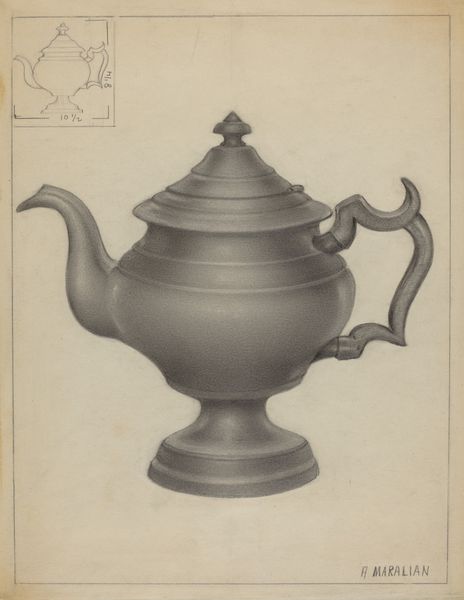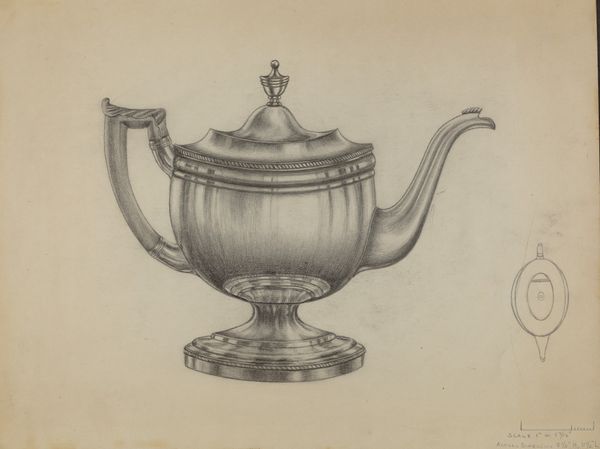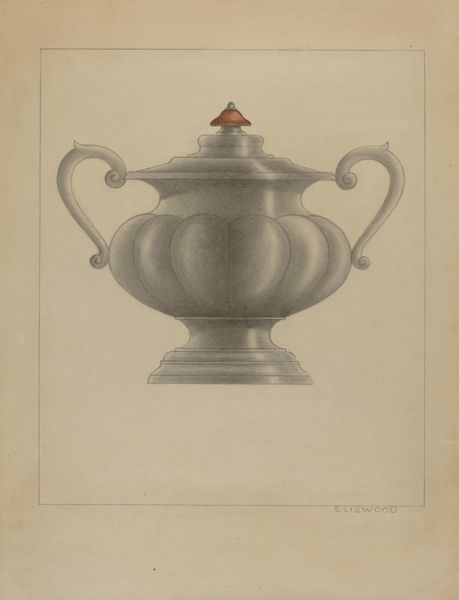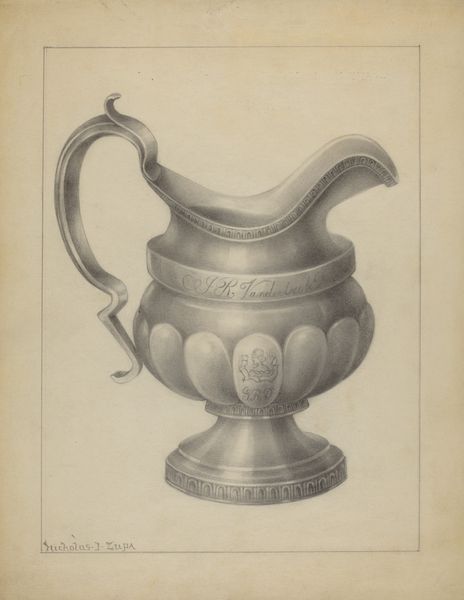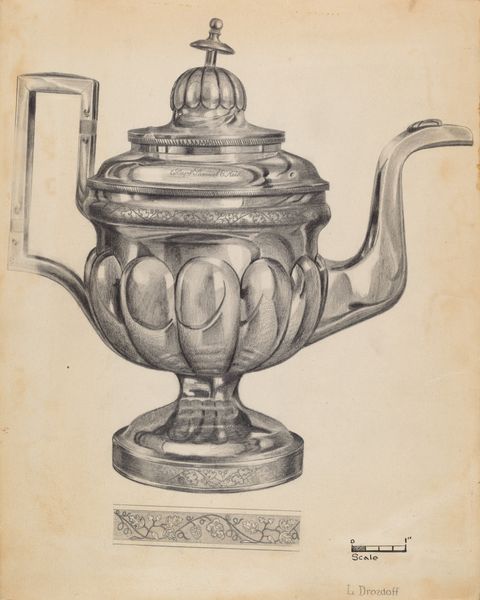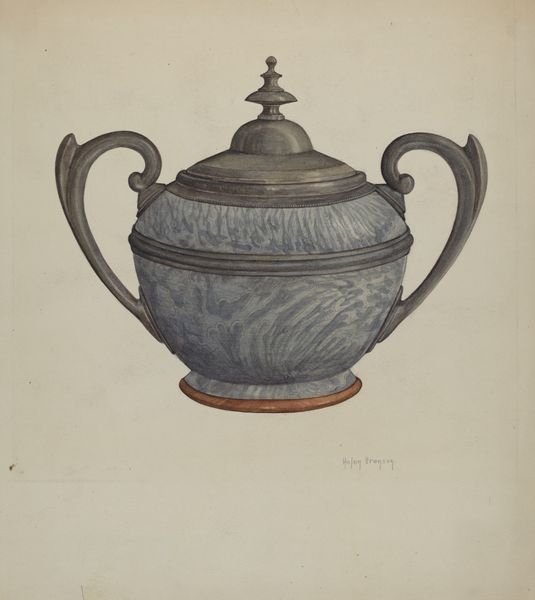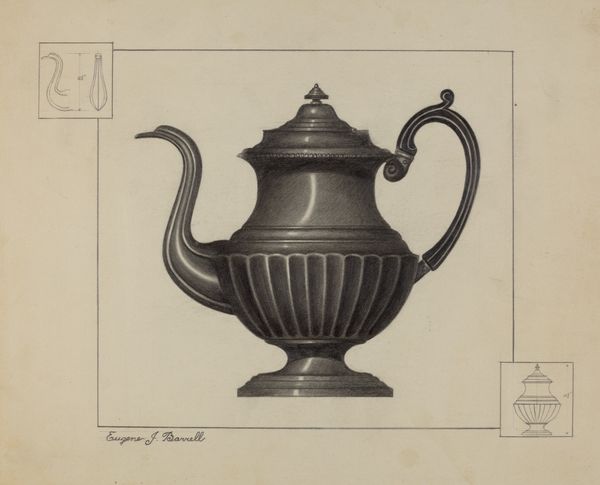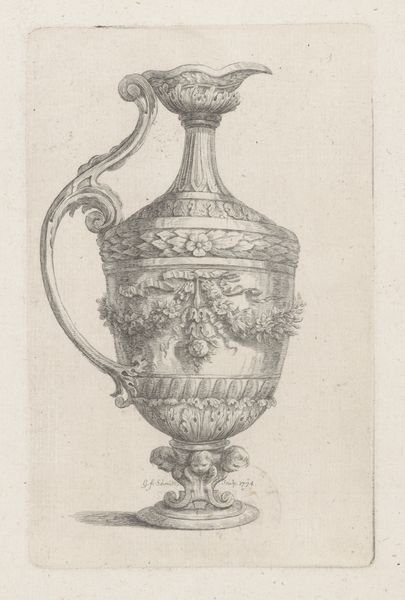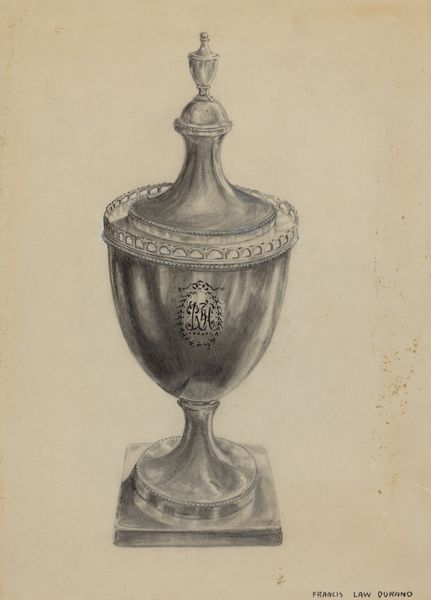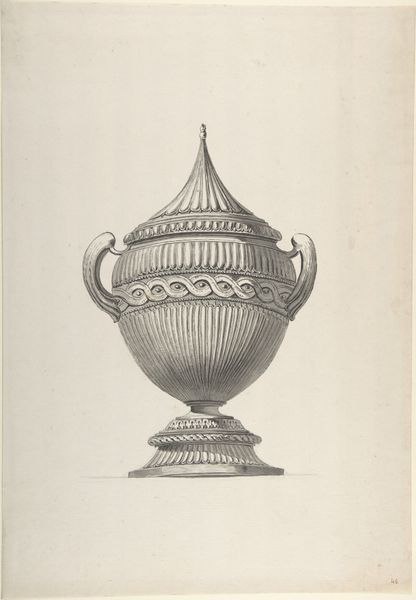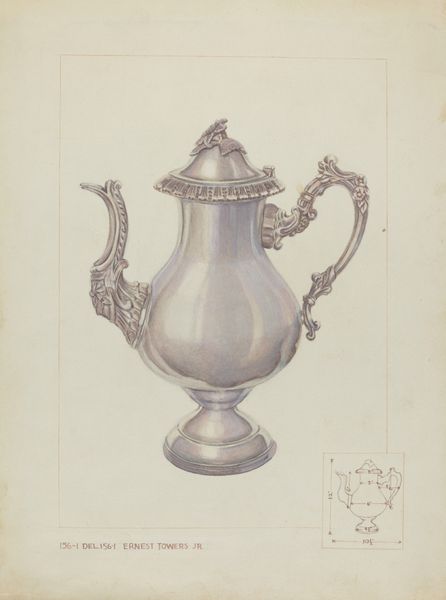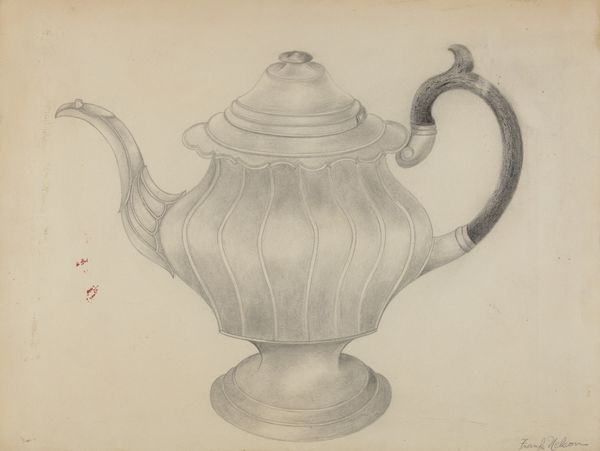
drawing, pencil
#
drawing
#
pencil drawing
#
geometric
#
pencil
Dimensions: overall: 28.7 x 22.8 cm (11 5/16 x 9 in.) Original IAD Object: 8 1/4" high; 7" wide
Copyright: National Gallery of Art: CC0 1.0
Editor: So, this is "Silver Sugar Bowl," a pencil drawing from 1936 by Nicholas Zupa. I'm immediately struck by the intricate detail, almost photographic, yet somehow also distant. It’s not something I can just reach out and touch. How do you interpret this work? Curator: The artist renders a domestic object with reverence. A sugar bowl. Think of what sugar meant in 1936: a marker of status, an aspirational luxury during the Depression era. The silver amplifies this: both catching and reflecting light, connoting wealth, refinement, a visual echo of better times. What stories might this vessel silently contain? Editor: I see what you mean. The choice of silver and the meticulous detail elevate something quite ordinary to almost a symbol. But of what, exactly? Curator: Perhaps a symbol of delayed dreams. The controlled execution, the absence of expressive mark-making, suggests restraint. Does this depiction glorify the object, or subtly lament its inaccessibility for many at the time? Is it nostalgia, perhaps? Editor: That makes sense. So it’s less about the bowl itself and more about the ideas it represents, like social status and memory. The American Dream, maybe deferred. Curator: Exactly! Visual culture constantly negotiates with memory and aspiration. Ask yourself, what symbols resonate within you, whispering of your own history and yearnings? Editor: It's interesting to think about how something as simple as a sugar bowl could be loaded with all that meaning. I'll definitely look at still-life drawings differently from now on! Curator: Wonderful. Symbols gain new meanings with time. Our goal is not to find a final explanation, but rather, trace a complex visual trajectory through human history and thought.
Comments
No comments
Be the first to comment and join the conversation on the ultimate creative platform.
